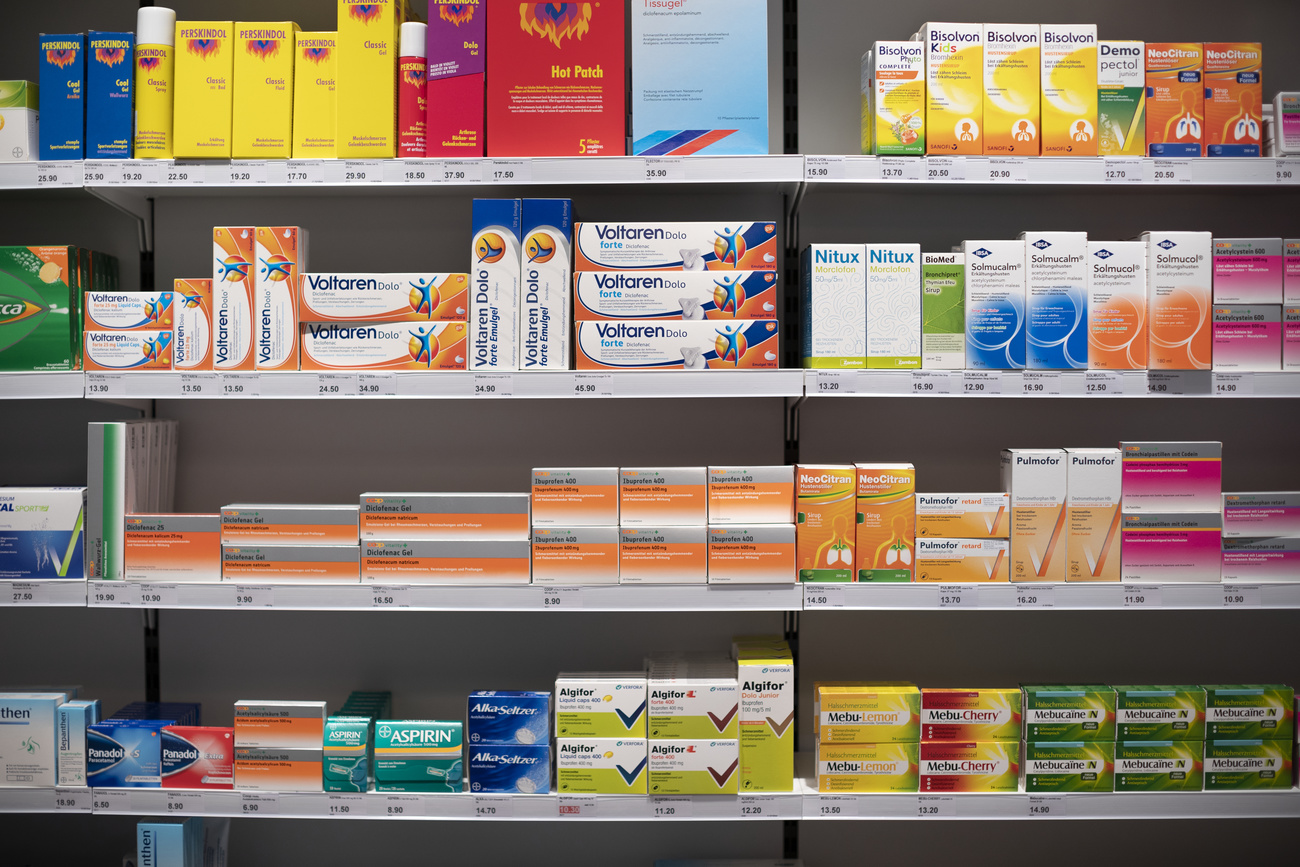
How US tariffs could disrupt the generic drugs supply chain

Generic drugs run on thin margins and tight supply chains. Any disruption triggered by increased tariffs could raise prices, push some manufacturers out of the market and even worsen medicine shortages.
Generic medicines – cheaper versions of branded drugs whose patents have expired – are the backbone of modern healthcare. They account for most prescriptions issued globally and are essential for treating a wide range of common and chronic conditions, from infections to cardiovascular diseases.
But their affordability comes at a cost: generic manufacturers operate on razor-thin margins and rely on complex global supply chains, leaving them particularly vulnerable to external shocks.
The introduction of new tariffs could reduce dependence on foreign suppliers by encouraging domestic production, but it’s a risky strategy – one that might drive up costs and potentially push some manufacturers out of key markets, experts warnExternal link.
For the generics industry, tariffs could lead to manufacturing discontinuations and shortages, saidExternal link Ronald Piervincenzi, CEO of the United States Pharmacopeia (USP), a non-profit group that sets drug quality standards, in an interview in April with Fierce Pharma, a news website focused on the pharma industry. “I don’t know if a tariff is actually the incentive to move, but rather just the incentive to produce something else or purchase for a different market,” he added.
Pharmaceuticals have so far been excluded from the sweeping new US tariffs, but the sector may not be spared for long.
President Donald Trump has repeatedly signalled his intention to target pharmaceutical imports, and in April the US Department of Commerce launched an investigationExternal link into whether such imports pose a risk to national security. The department has up to nine months to deliver its findings, but Commerce Secretary Howard Lutnick saidExternal link tariffs – expectedExternal link to be 25% or higher – could be imposed sooner. At present, there is no indication that generics would be treated differently from branded products.
Dependency on Asia
Behind the affordability of generics lies a global supply chain that depends heavily on Asia, a dependency recent US tariff threats aim to address by encouraging domestic production.

According to some estimates, China alone produces 80% of the world’s active pharmaceutical ingredients (APIs), the essential components that give medicines their therapeutic effect. For at least three World Health Organization-listed essential generic medicines, all global API production is concentratedExternal link in China.
In EuropeExternal link, around 80% of the APIs used in generic medicines and 40% of finished generic drugs are produced in China or India. In the USExternal link, as of 2021, nearly 90% of the facilities making generic APIs for the domestic market were located abroad, along with almost two-thirds of the sites producing finished generics.
While the US directly importsExternal link just around 16% of its APIs from China, its indirect reliance is greater. Nearly 40% of finished generics sold in the country come from India, a country that, in turn, sources up to 80% of its APIs from China.
Some products are especially dependent on this global supply chain: an estimatedExternal link 90–95% of sterile injectable generics used in US hospitals and emergency care rely on raw materials or active substances from China and India.
More shortages coming?
While a single generic medicine may be sold by multiple companies, many rely on the same supplier for key ingredients. A disruption early in the supply chain – such as a tariff-related interruption of raw materials or APIs – can therefore ripple across all producers.
“The generics supply chain is like a tree with a slender trunk – there may be a lot of fruit at the top, but one problem at the base and the whole thing collapses,” said Jonathan Silcock, Associate Professor in the School of Pharmacy and Medical Sciences at the University of Bradford in the UK.
Even when disruptions are anticipated, ramping up production is neither straightforward nor fast. “If five companies are making the same generic drug, each only has the capacity to serve its own market share,” explained Ivan Lugovoi, Assistant Professor of Medical and Pharmaceutical Supply Chain Management at Kühne Logistics University.
If one exits the market – due to tariffs, for example – the others simply don’t have the resources to take over quickly,” which could raise the risk of generics shortages, already a pressing issue in many countries.
The world is still reeling from medicine shortages ranging from paracetamol to amoxicillin – a frontline antibiotic used to treat bacterial infections in children, in part due to supply chain disruptions caused by Covid-19 restrictions.
“When demand spiked, manufacturers were physically unable to scale up production fast enough to meet it,” Lugovoi said.
Any further pressure risks fragilising supply even more, and not just for generics. Branded drugmakers, despite being equipped with greater resources, are sounding the alarm too: “Tariffs can create disruptions in the supply chain, leading to shortages”, saidExternal link Johnson & Johnson’s CEO, Joaquin Duato, during an earnings call in April.
Price pressure
In 2023, generics and biosimilars – biological drugs that are nearly identical to already approved treatments – accounted for 90% of all prescriptions filled in the US, yet represented just 13.1% of total drug spending, accordingExternal link to the Association for Accessible Medicines (AAM). This cost-efficiency translatedExternal link into over $445 billion (CHF363 billion) in savings for the US healthcare system that year.
That affordability, however, might be under threat. If enacted, US tariffs on pharmaceutical imports are widely expected to raise domestic drug prices. While the broader pharmaceutical market would be affected, generics could be particularly hard hit: their already narrow profit margins would make it difficult to absorb increased costs, making price increases more likely.
Dutch bank ING estimatedExternal link that a 25% tariff could increase the cost of a 24-week prescription in the US for a generic cancer treatment by $8,000 to $10,000. Those without insurance would be hit hardest, though higher insurance premiums could follow for others, warnedExternal link Stephen Farrelly, global head of pharma and healthcare at ING.
Silcock, however, noted that pharma companies are more likely to raise prices the most where generics are currently cheaper, rather than in countries with a strong pharmaceutical industry, like the US and Switzerland, where prices are already high.
In Switzerland, use of generics has historically been lowerExternal link than in other European countries. In 2023, they accounted for just 23% of all medicines sold – well below the OECD average of 54% and significantly behind countries like Germany (83%) and the UK (80%). Although usage in Switzerland has increased in recent years, prices remain considerably higher: in 2023, generics cost on average 45.5% less in the rest of Europe than in Switzerland.
This lower reliance on generics, combined with already high drug prices, suggests that Switzerland may be less vulnerable to generics shortages or price hikes triggered by US tariffs.
A political choice
Following Trump’s statements, several major drugmakers – including Swiss giants Roche and Novartis – announced billion-dollar investments in US manufacturing facilities. While these projects will take years to complete, their declarations serve a dual purpose: shielding companies from potential future tariffs and signalling alignment with US industrial policy.
But the same strategy is far less feasible for generic manufacturers. Companies like Basel-based Sandoz often sell their products at up to 95% less than the original branded drugs, leaving little or no room to absorb additional costs from tariffs.
“Building a new manufacturing facility takes at least three to five years, plus another one to two years to obtain regulatory approvals before production can even start,” noted Lugovoi. “It’s a significant long-term investment with uncertain returns,” he added. “Generic companies – which have lower financial resources than other drugmakers – won’t make that leap unless there’s a clear, reliable commitment from the host country.”
Faced with rising costs, generic drugmakers may find it more feasible to discontinue certain products than to absorb expenses or shift production to high-cost countries. In April, Sandoz CEO Richard Saynor warnedExternal link that significant tariffs could force the company to withdraw some products from the US market. “The tariffs will certainly not encourage us to invest more in the country,” he said.
Unlike Roche and Novartis, Sandoz lacks a US manufacturing base. The company – now one of the world’s largest generics producers following its 2023 spin-off from Novartis – derives nearly a quarter of its revenues from North America. According to its 2024 annual reportExternal link, Sandoz generated $2.4 billion (CHF1.97 billion) in net sales in the region, second only to Europe.
But even if tariffs succeeded in forcing production back to the US, Silcock argues that it would still be a flawed industrial strategy. Given the huge volume of generics sold in the US, even a small price increase would significantly raise healthcare spending without adding real value. “The priority should be getting generics at low cost,” he said. “The value of Western pharma lies in innovation, and that’s where investment should go.”
Not everyone agrees that affordability should be the overriding concern. Lugovoi argues that the decision to reshore is ultimately political. “If the generics industry is considered strategic, like defence, then the logic shifts,” he said. “You don’t outsource the production of military equipment to foreign states just because it’s cheaper.”
Given the current dependence on Asia for key pharmaceutical ingredients, tariffs may be seen less as a commercial tool and more as a geopolitical lever to reduce that reliance.
But if the goal is to strengthen domestic resilience, Lugovoi noted, tariffs might not be the best tool to achieve it. Instead, governments would need to offer serious incentives and long-term contracts to convince manufacturers to return. “It would be expensive,” he admitted, “but this is the price you pay for security.”
Edited by Virginie Mangin/sb

More
More people switching to generic medicine in Switzerland

In compliance with the JTI standards
More: SWI swissinfo.ch certified by the Journalism Trust Initiative




























You can find an overview of ongoing debates with our journalists here . Please join us!
If you want to start a conversation about a topic raised in this article or want to report factual errors, email us at english@swissinfo.ch.